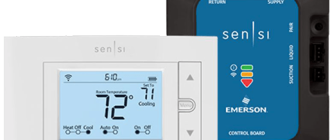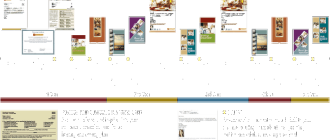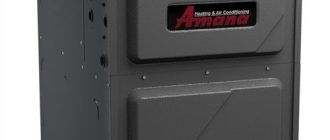
Flat-Rate Pricing: Calculation and Pricing Formula
Introduction to Flat-Rate Pricing
Welcome to the world of flat-rate pricing, where transparency and efficiency reign supreme! In today’s fast-paced service industry, customers crave simplicity and certainty when it comes to pricing. Gone are the days of confusing hourly rates or unexpected additional charges. With flat-rate pricing, both businesses and clients can enjoy a seamless experience from start to finish.
Imagine this: you’re a customer in need of a service – maybe it’s plumbing repairs, electrical work, or even website design. Instead of being left in the dark about how much you’ll be charged at the end of the project, with flat-rate pricing, you know exactly what to expect upfront. No surprises or hidden fees lurking around the corner!
But how is this magic formula calculated? How do companies determine their prices while still ensuring profitability? Don’t worry – we’ve got you covered! In this blog post, we’ll dive into the nitty-gritty details of flat-rate pricing calculation methodology for various industries. So buckle up and get ready for some enlightening insights that will revolutionize your understanding of fair and transparent pricing structures!
Benefits of Flat-Rate Pricing

Flat-rate pricing offers numerous benefits to businesses in the service industry. One of the main advantages is that it provides transparency and predictability for both the business and the customer. With a flat rate, customers know exactly what they will be charged upfront, eliminating any surprises or hidden fees.
Another benefit is that flat-rate pricing can help businesses increase their profitability. By accurately calculating costs and applying a markup factor, companies can ensure they are covering all expenses while still earning a healthy profit margin.
Additionally, flat-rate pricing simplifies the billing process for businesses. Instead of tracking hours worked or materials used on each individual project, companies can provide one fixed price for their services. This streamlines administrative tasks and reduces paperwork.
Moreover, offering flat-rate pricing gives businesses a competitive edge over their competitors who may still use hourly rates or cost-plus methods. Customers often prefer knowing the total cost before committing to a service rather than being uncertain about how much they will ultimately have to pay.
Furthermore, by implementing flat-rate pricing models, businesses can enhance customer satisfaction levels as well as build trust with their clients. When customers feel confident in knowing what they will be paying from the start, it fosters better relationships built on transparency and reliability.
Adopting a flat-rate pricing strategy brings several benefits to service-based businesses including increased transparency and predictability for customers, improved profitability through accurate calculations and simplified billing processes. It also helps in gaining a competitive advantage by appealing to customer preferences for upfront costs while fostering trust with clients through transparent practices
Components of Flat-Rate Pricing
Components of Flat-Rate Pricing
Flat-rate pricing in the service industry involves several key components that are crucial for determining the price to charge customers. These components help ensure fairness, transparency, and profitability for both the service provider and the customer.
The first component is the calculation methodology. This entails breaking down the project or service into specific tasks, estimating time and material costs required for each task, and applying a markup factor to account for overhead expenses and desired profit margins. By following a systematic approach to calculating costs, businesses can avoid undercharging or overpricing their services.
Determining time and material costs is another critical component of flat-rate pricing. Service providers need to accurately estimate how much time it will take to complete a project or provide a particular service. Additionally, they must consider any materials or resources needed during the process. A thorough analysis of these factors helps determine an appropriate price that reflects both labor and material expenses.
Applying a markup factor is essential to cover overhead costs such as rent, utilities, employee wages, insurance premiums, marketing expenses,and other operational expenditures.
The amount added as markup should also account for desired profits while remaining competitive within the industry.
Adjustments for overhead and profit ensures that all associated business expenses are covered while allowing room for growth and sustainability.
Applying this adjustment properly creates a win-win situation where customers receive quality services while businesses maintain profitability.
In order to illustrate these concepts more clearly let’s consider an example:
A construction company calculates its flat-rate pricing based on estimation software that breaks down projects into individual tasks with corresponding labor requirements.
An estimator uses historical data which includes average times taken by skilled workers in completing similar projects.
He then multiplies those times by hourly labor rates including benefits.
The estimator also considers material costs which he adds up along with anticipated overheads,factoring in projected profits.
Afterwards,a suitable percentage,maybe 20%,is applied as markup on total cost.
A final adjustment may be made after analyzing market conditions,competition,and customer requirements.
These components of flat-rate pricing provide a comprehensive
Calculation Methodology
Calculation Methodology
When it comes to flat-rate pricing in the service industry, having a clear and effective calculation methodology is crucial. This ensures that you are accurately determining the price for your services, taking into account all relevant factors.
The first step in the calculation process is identifying the time and material costs associated with completing a particular job or project. This includes considering employee wages, materials used, equipment expenses, and any other direct costs involved.
Once you have determined these costs, it’s important to apply a markup factor to ensure profitability. The markup factor takes into account overhead expenses such as rent, utilities, insurance, and other indirect costs that contribute to running your business.
However, it’s essential not to overlook the importance of factoring in overhead and profit when calculating prices. These additional amounts help cover general business expenses and provide room for growth and sustainability.
To illustrate this calculation methodology further:
Total Cost = Time + Material Costs
Markup Factor = (Overhead + Profit) / Total Cost
By using this formula consistently across your pricing calculations, you can maintain accuracy and ensure that all necessary costs are accounted for.
Remember that while there may be industry standards or average rates available as references for flat-rate pricing formulas within your specific field of expertise or location – ultimately customer perception plays a significant role in determining value. Additionally , competitive analysis also helps determine where you stand against others in terms of pricing strategy.
Effective communication with customers about flat-rate pricing is essential too. By explaining how your pricing is calculated based on factors like time and material costs plus overheads & profits , customers will feel more confident in understanding why they are being charged what they are – resulting maintaining transparency which leads to trust between client-customer relationship.
Consistency is key when implementing flat-rate pricing across different jobs or projects within your business . It’s important maintain consistency so customers don’t feel like they’re being treated unfairly . Therefore evaluating pricing structures and periodically updating them ensures that your prices remain competitive in the market while






